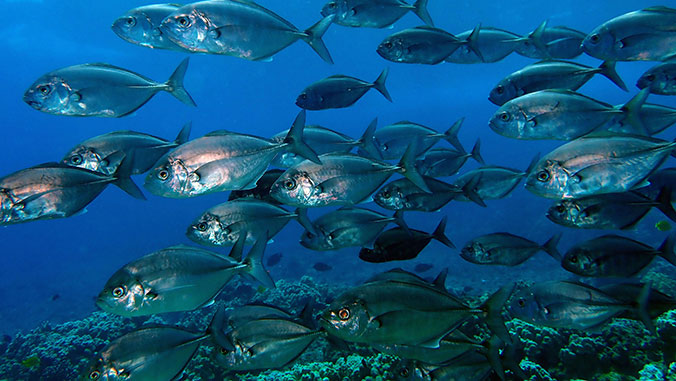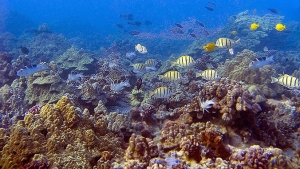
Hawaiʻi’s nearshore waters need more effective management, according to a comprehensive study, led by University of Hawaiʻi at Mānoa researchers, which also found that a diverse integrated system of marine management areas can help restore the state’s declining coral reef fisheries and boost the resilience of coral reefs in a changing climate.
Well-designed marine management areas are a proven tool that can restore coral reef fisheries, increase coastal protection and provide recreational, cultural and economic opportunities. In collaboration with the Hawaiʻi Department of Land and Natural Resources, the study found that while Hawaiʻi has many marine management areas, most are too small and allow some form of human use within their boundaries that can limit their ability to restore depleted fisheries.
“We need to improve the marine management areas we already have and effectively manage additional areas if we are to protect and restore Hawaiʻi’s unique and valuable marine environment,” said Alan Friedlander, fisheries researcher at UH Mānoa’s Hawaiʻi Institute of Marine Biology and lead author of the study. “That includes setting aside some areas where fishing is prohibited, because we know that replenishes fish stocks. It also includes areas where the state co-manages resources with coastal communities that want to implement more sustainable traditional management practices.”

The study provides critical information for the state’s initiative to effectively manage 30 percent of Hawaiʻi’s nearshore waters by 2030. The key to reaching this goal is to create an ecologically connected network of marine management areas that can rebuild and sustain productive nearshore fisheries. According to Friedlander, reef fish populations have declined dramatically in Hawaiʻi over the last century, with some important food fish populations reduced by more than 90 percent.
The study also shows that, overall, marine management areas in Hawaiʻi are too small and that the average marine management area size is minuscule compared with the geographic extent of the species they are designed to protect.
Marine ecosystems can rebound
When fish can mature in protected waters, they grow much larger and can produce exponentially more eggs than smaller, younger fish. The larger fish and their larvae can spill over into neighboring areas that are open to fishing.
“Many fishers already know this and engage in what’s called ‘fishing the line’ between [marine protected areas] and open fishing areas,” Friedlander said. “In general, fishers can get the greatest benefit by protecting the largest spawning fishes in larger no-fishing areas.”
For more see the School of Ocean and Earth Science and Technology’s website.
—By Marcie Grabowski

